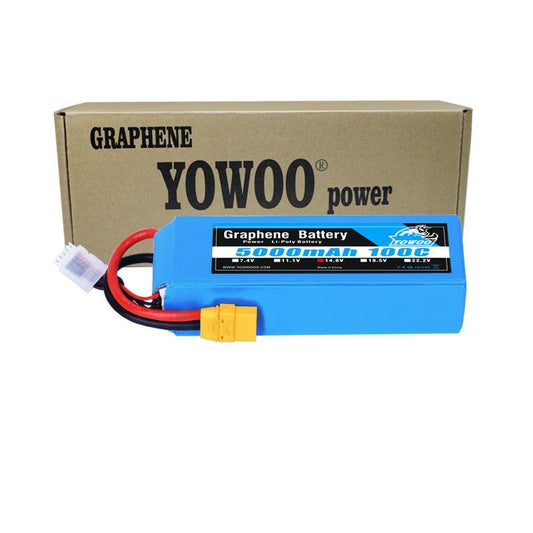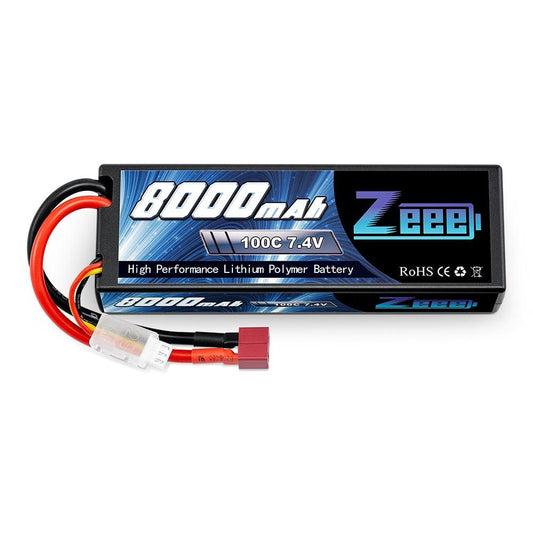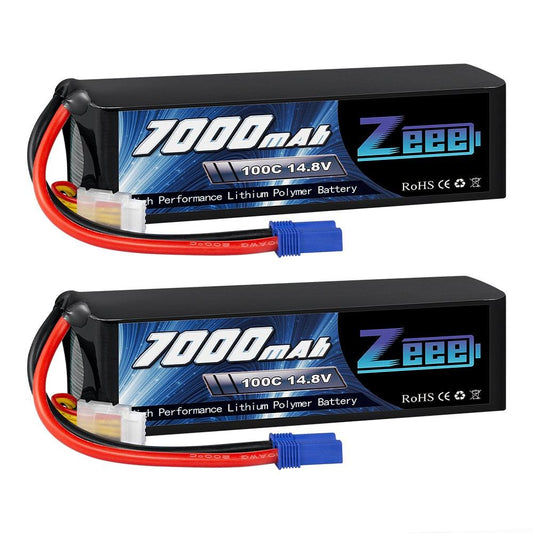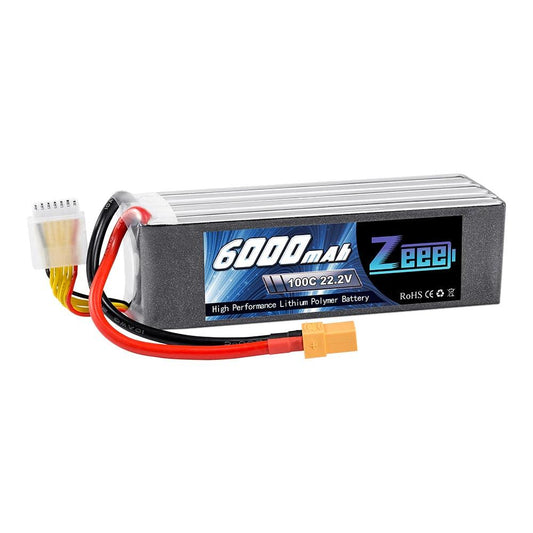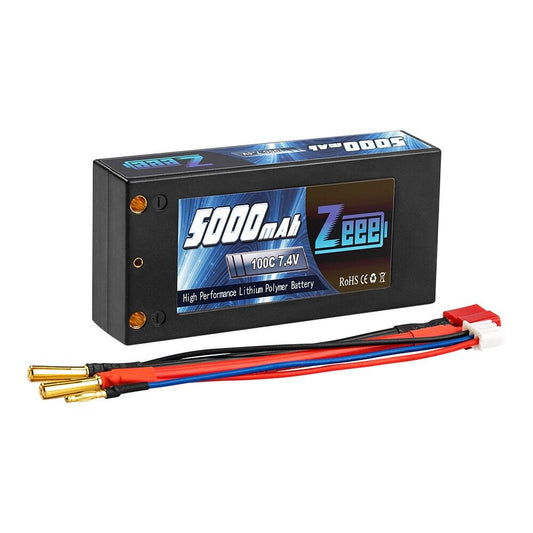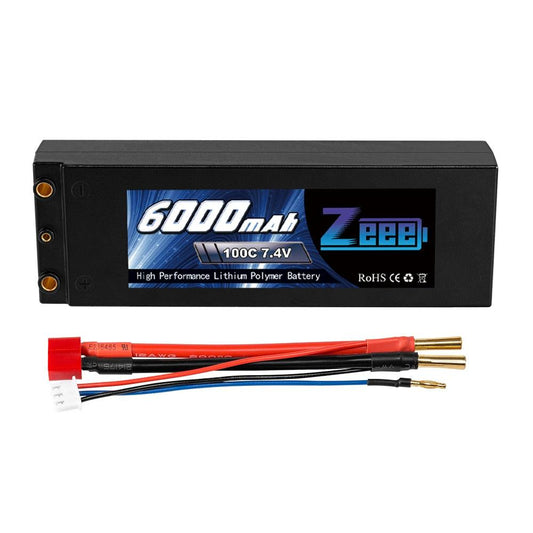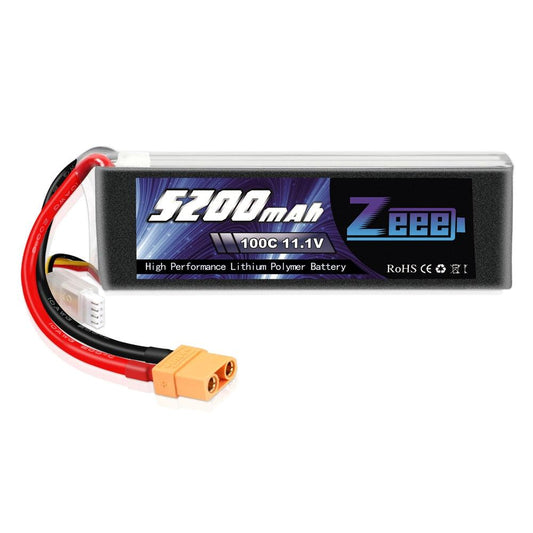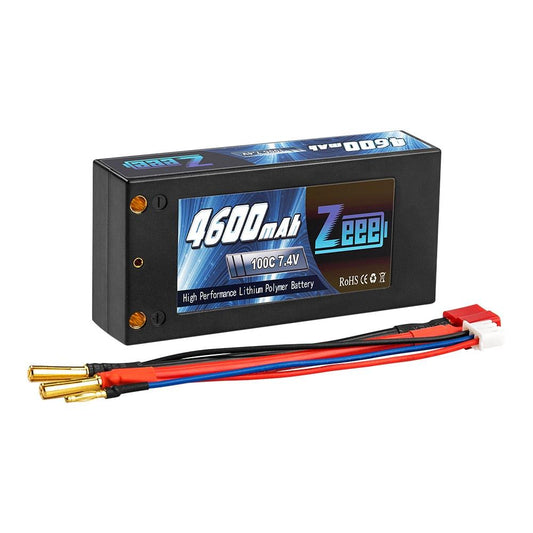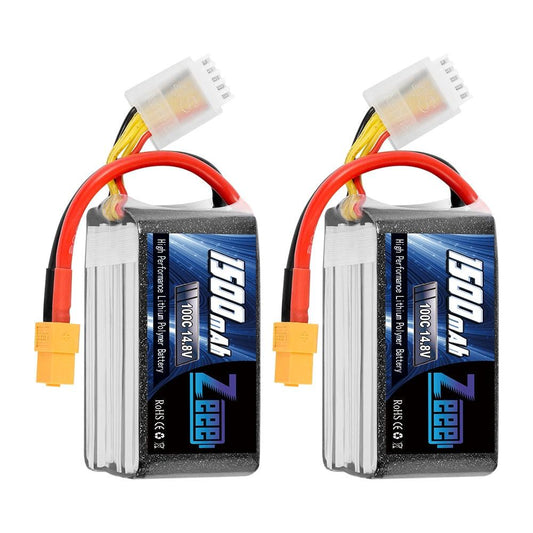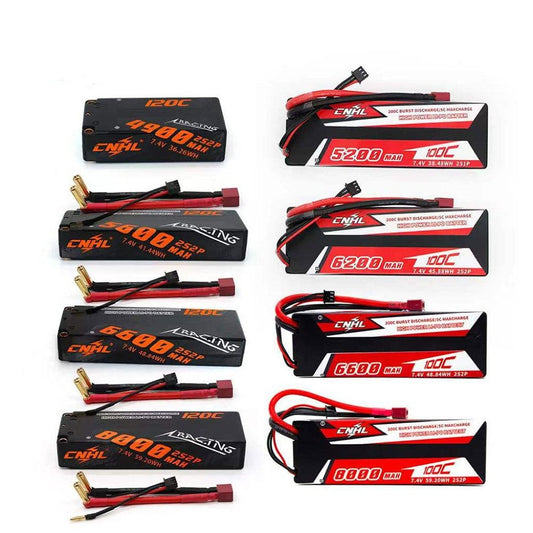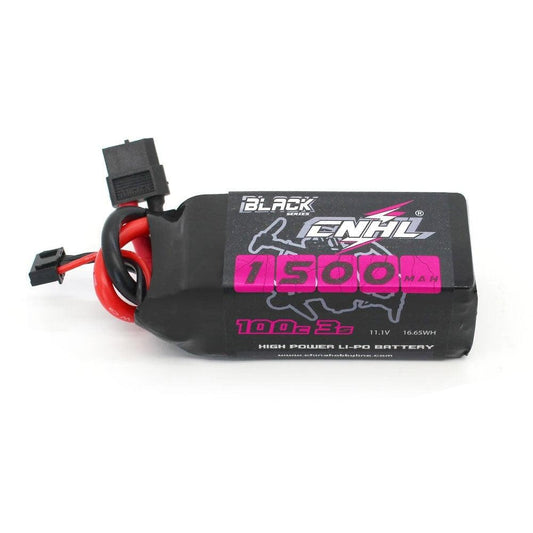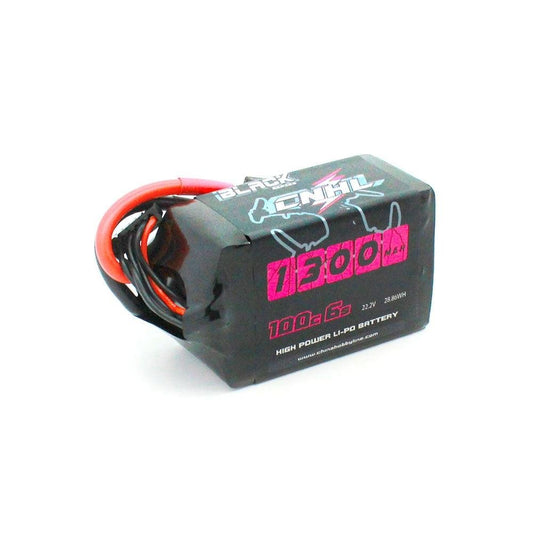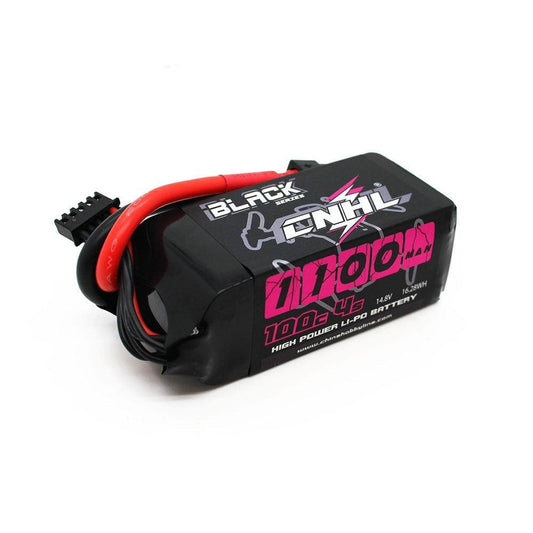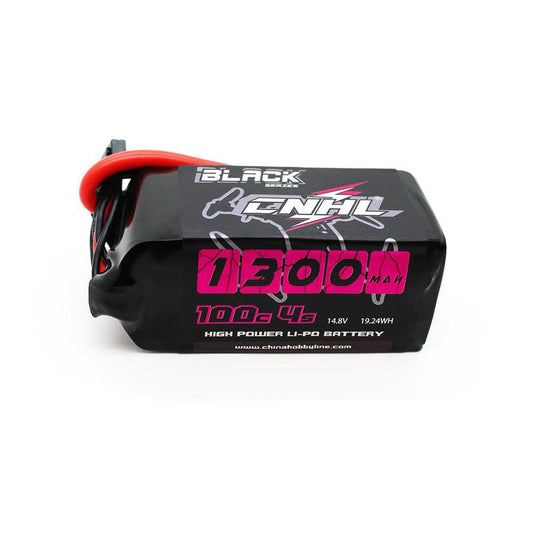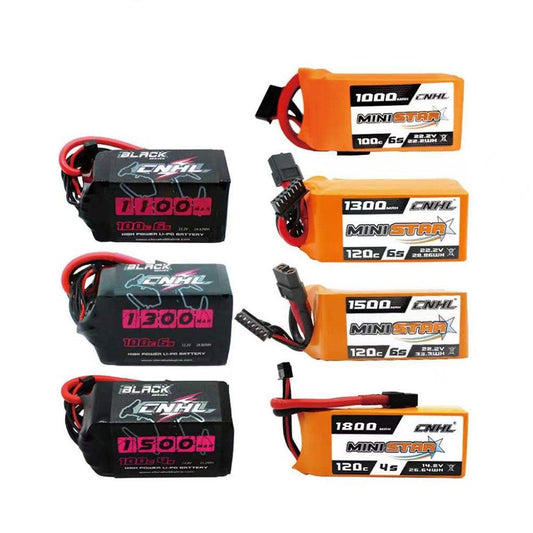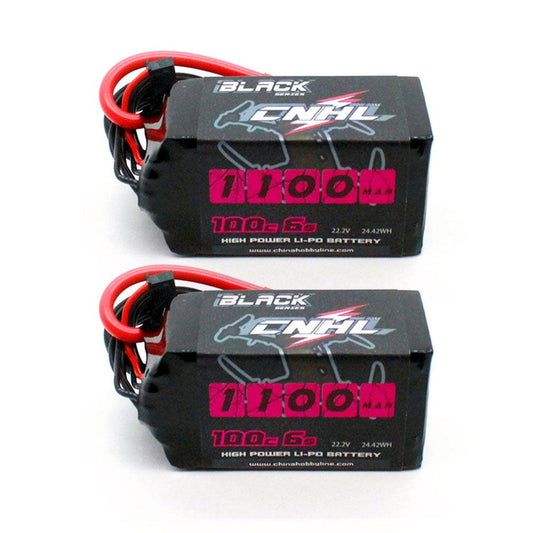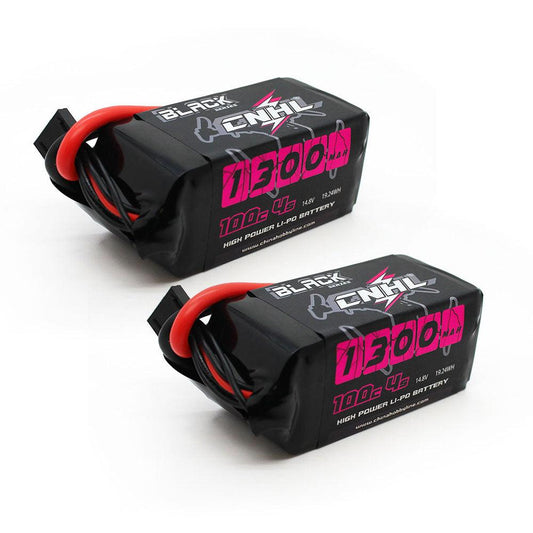100C Lipo Battery
Introduction to 100C LiPo Battery:
Definition: A 100C LiPo (Lithium Polymer) battery refers to the discharge rate or the maximum continuous current that the battery can deliver. The "C" rating represents the multiple of the battery's capacity that it can discharge, with 100C indicating a discharge rate of 100 times the battery's capacity.
Advantages:
- High Discharge Rate: The 100C rating indicates that the battery can deliver an extremely high continuous current, making it suitable for applications that require a tremendous amount of power.
- Maximum Performance: With a higher discharge rate, the 100C LiPo battery can provide maximum power output, resulting in unparalleled performance, lightning-fast acceleration, and instantaneous responsiveness for high-speed FPV drones and high-performance RC vehicles.
- Enhanced Efficiency: The high discharge rate of the 100C LiPo battery ensures efficient power delivery, minimizing voltage sag and maximizing the available power for demanding maneuvers and aggressive flights.
Suitable Drone: The 100C LiPo battery is commonly used in high-performance FPV racing drones, freestyle drones, and other advanced RC vehicles that require extreme power and agility. It is favored by professional racers and experienced pilots who demand the highest level of performance.
Brand: Various brands offer 100C LiPo batteries, including well-known manufacturers in the RC industry such as Gens ACE, Tattu, CNHL, and more. It's important to choose a reputable brand that provides reliable and high-quality batteries.
Charge/Discharge Time: The charge time and discharge time of a 100C LiPo battery depend on its capacity and the charger used. Higher-capacity batteries may take longer to charge, while the discharge time varies based on the power consumption of the drone or RC vehicle.
Capacity: The capacity of a LiPo battery is measured in milliampere-hours (mAh). 100C LiPo batteries are available in various capacities to suit different applications and flight durations. Higher-capacity batteries store more energy and can provide longer flight times.
Charge/Discharge Order: When using a 100C LiPo battery, it's important to follow the correct charge and discharge order. Always fully charge the battery before use, and avoid over-discharging it during flight. This helps maintain the battery's performance and prolong its lifespan.
Service Life: The service life of a 100C LiPo battery depends on several factors, including how well it is maintained, the number of charge/discharge cycles, and the operating conditions. With proper care and adherence to safety guidelines, a 100C LiPo battery can provide a decent service life.
Battery Material: 100C LiPo batteries typically use high-quality lithium polymer cells, known for their high energy density and excellent power delivery capabilities. These cells are lightweight and offer a favorable power-to-weight ratio, ideal for high-performance applications.
Battery Charger: To charge a 100C LiPo battery, it is crucial to use a charger specifically designed for LiPo batteries. Look for a charger that supports the charging parameters of the battery, including the cell count, voltage, and charge current.
Battery Connector: The specific battery connector used on a 100C LiPo battery may vary depending on the brand and model. Common connector types include XT60, XT90, EC5, and more. Ensure compatibility with your drone or RC vehicle's power distribution system and ESC.
Power Supply Management: When using a 100C LiPo battery, it is important to practice proper power supply management. Avoid overloading the battery with excessive power demands, as this can lead to voltage drops and potential damage to the battery or electronic components.
In summary, a 100C LiPo battery is a high-performance power source designed for demanding FPV racing drones and high-speed RC vehicles. With its exceptionally high discharge rate, it provides unmatched power output, superior performance, and lightning-fast responsiveness. When using a 100C LiPo battery, ensure proper charging, discharge, and maintenance practices to optimize its performance and longevity.
